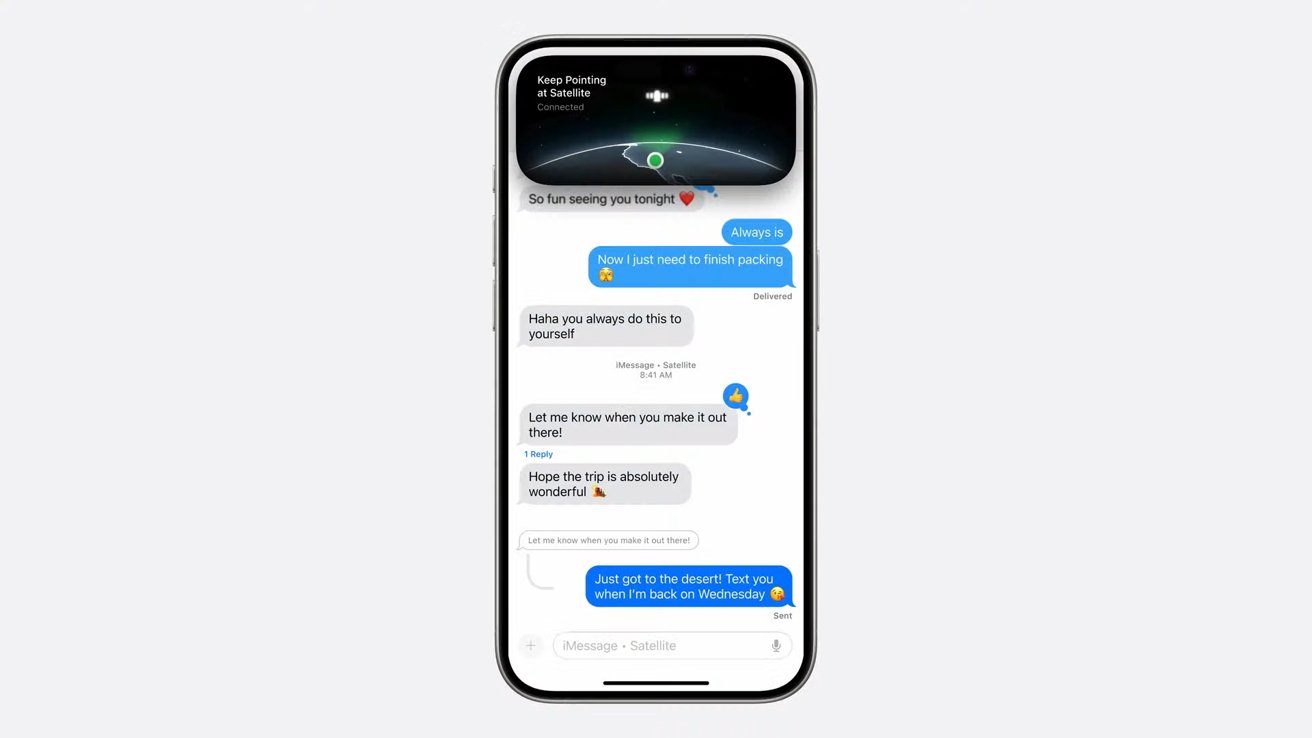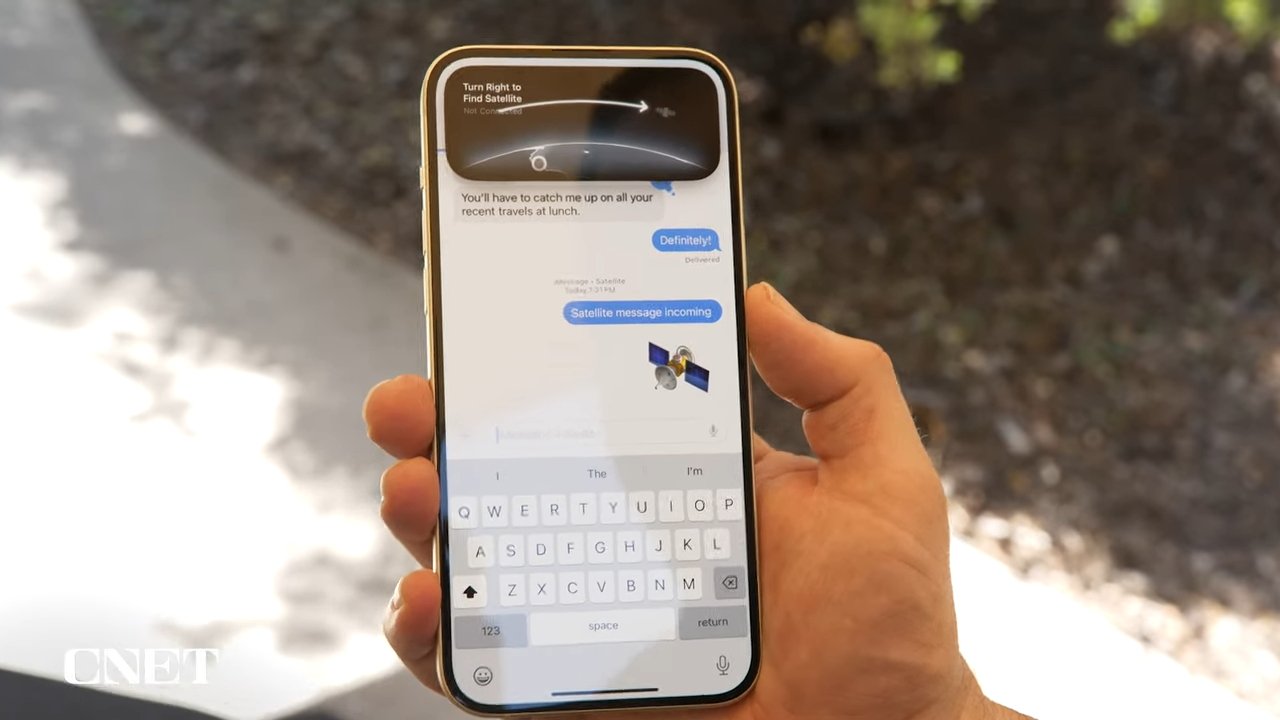One of the new features coming to iPhone this fall is the ability to send text messages via satellite — here's what you can expect.
On Monday, Apple held its annual keynote for WWDC. The event gave developers and Apple fans alike a look at what is coming down the pipeline for Apple's next line of operating system releases.
As expected, a portion of the two-hour keynote focused on what Apple would introduce with iOS 18. One such feature is Apple's new Messages via satellite, which will allow users to send both iMessage and SMS-based texts when they do not have Wi-Fi or cellular service.
CNET met with Apple's senior director of platform marketing, Kurt Knight, to learn more about the feature.
Knight suggests that the feature would be especially useful for checking in with friends and family members when you may be in an area that doesn't have especially robust service, like on a hike.
And the messages do not need to be emergency-related, either. They are free to text away about their day as they would any other conversation.
Knight demonstrates that once your iPhone detects that you don't have cellular or Wi-Fi service, it'll send you a lock-screen alert that prompts the user to connect to a satellite to check for and send messages.
From there, iOS 18 will show users what services they can use while in satellite mode. This includes sending and receiving Messages, updating their Find My location, requesting Roadside Assistance, and contacting emergency services.
Once you select that you'd like to use Messages via satellite, the iPhone will guide you to getting properly positioned. And, once you're aligned properly, it works just like any other Messages conversation. If the satellite moves position, your iPhone will prompt you to realign yourself to continue the service.
Interestingly enough, the rules between iMessage and SMS are a little different. While you can freely send and receive iMessages, you'll need to first initiate conversations that require SMS.
Apple says this is because many automated promotional messages are sent via SMS, and it could cause too much congestion to the service if they were allowed to flow freely.
Currently, RCS messages, which will be supported in iOS 18, will not be supported for Messages via satellite. Apple says that this is because the RCS protocol isn't optimized to a size that works over satellite.
Like Emergency SOS via satellite, Messages via Satellite will be restricted to the iPhone 14 and later. Knight points out that the service will first roll out to customers in the U.S. and will roll out to other countries over time.
CNET notes that the feature is free — for now. Apple has said it has plans to charge for the service eventually but has not made the switch yet.
 Amber Neely
Amber Neely








-m.jpg)






 Marko Zivkovic
Marko Zivkovic
 Christine McKee
Christine McKee
 Andrew Orr
Andrew Orr
 Andrew O'Hara
Andrew O'Hara
 William Gallagher
William Gallagher

 Mike Wuerthele
Mike Wuerthele
 Bon Adamson
Bon Adamson


-m.jpg)



9 Comments
This happened much sooner than I expected. I mean, years sooner than expected.
Amazing. Even if the bandwidth is limited by the connection this adds another layer of safety for anyone with a supported iPhone who ventures outside of cellular coverage.
Satellite? Well, it takes my CarPlay Navigation 5 minutes to correctly put my location on the right spot after WWDC.
Just WOW! I regularly go to an area where I have to sponge off people with StarlInk set ups - just to send the messages, "I'm ok I made it". And then "on the way home".
Old saying: "The proof is in the pudding".
The satellite company, with Apple's financing, has to launch many (number not disclosed) new satellites to give good coverage just within the US proper let alone Alaska, Hawaii, Mexico or Canada or even other US territories. The coverage has to be across our borders to the North and South so there is solid coverage within all of the USA.
I see this as a multi-year plan and it could be three or four years before useful operation. Musk has been launching thousands of new satellites for coverage and his pockets are perhaps deeper than Apple's pockets for just this one marketing claim.
The SAT phone business will do very well world wide for many years. There are not other options for most of the remote land masses.